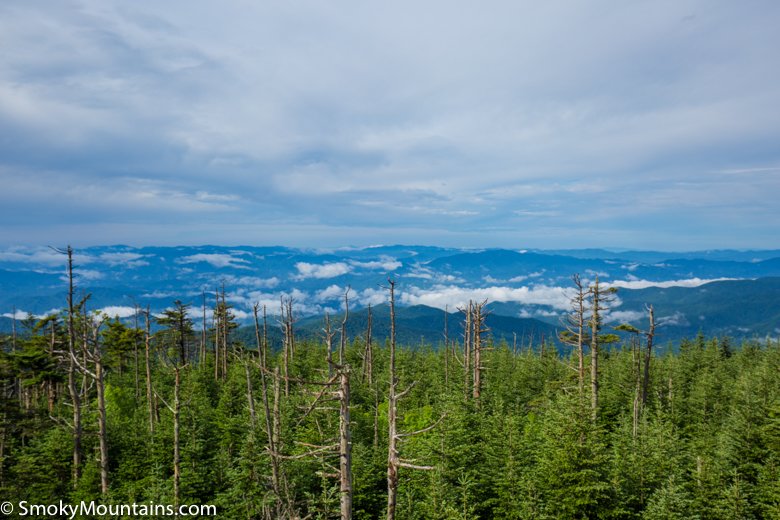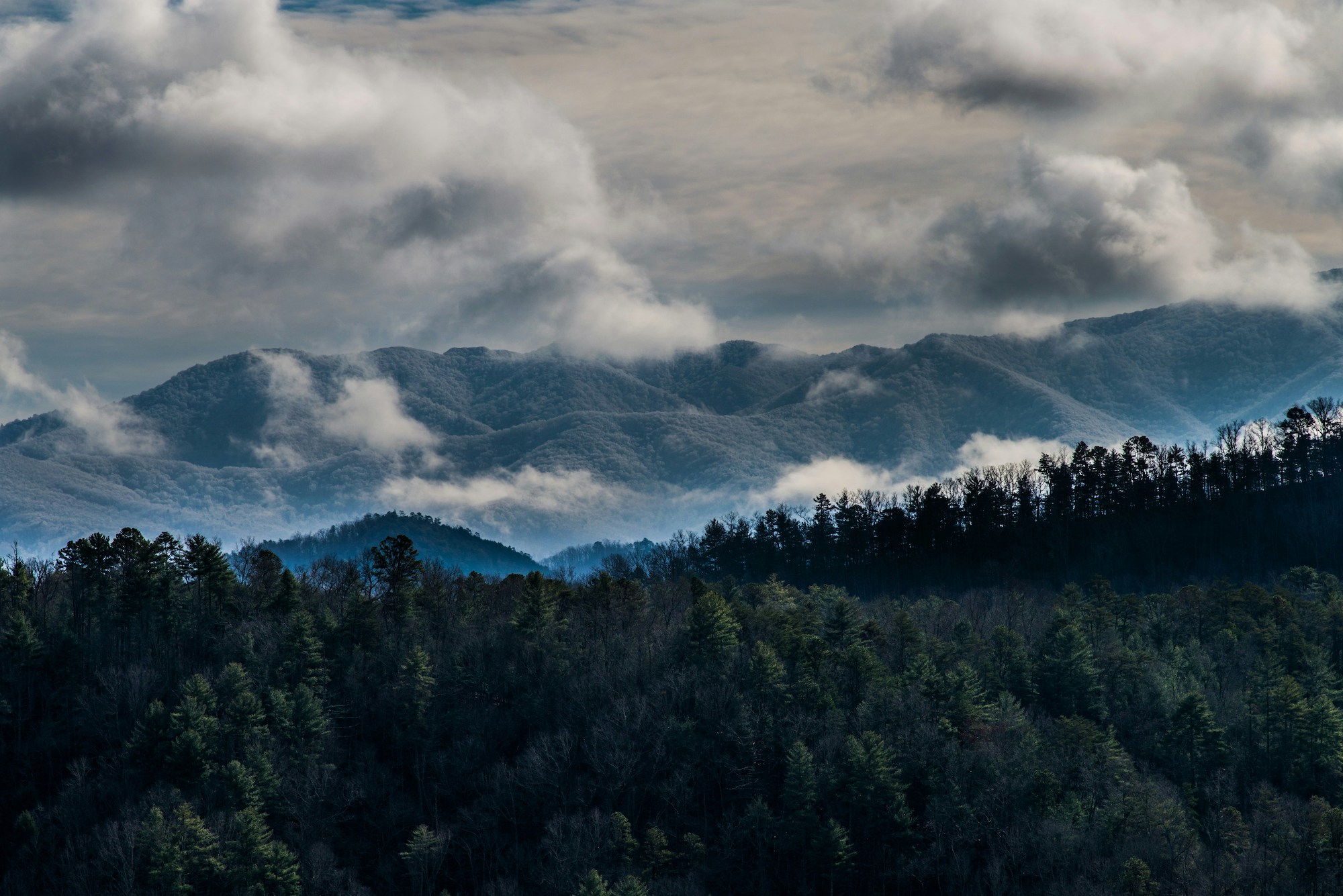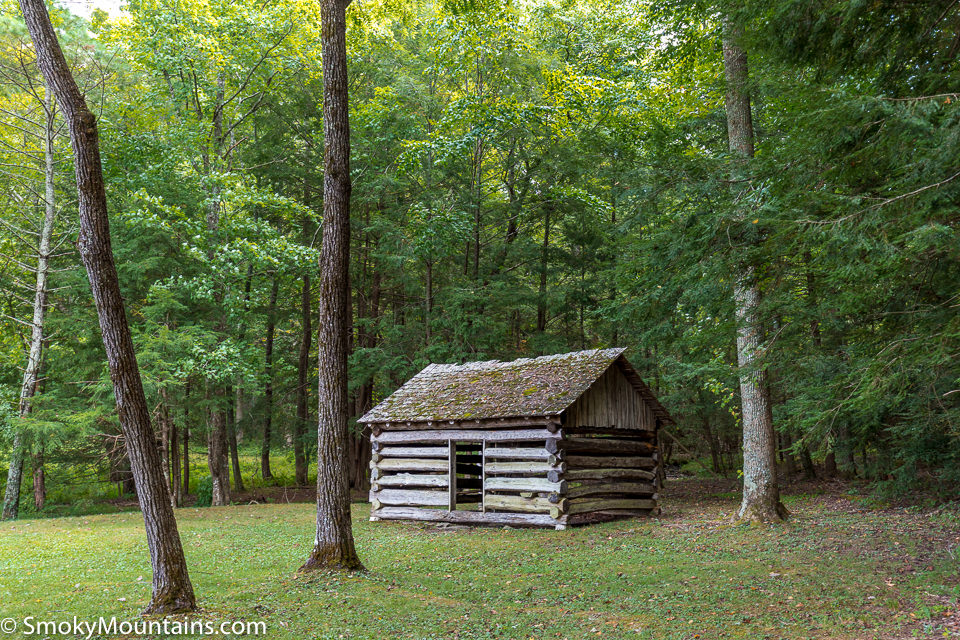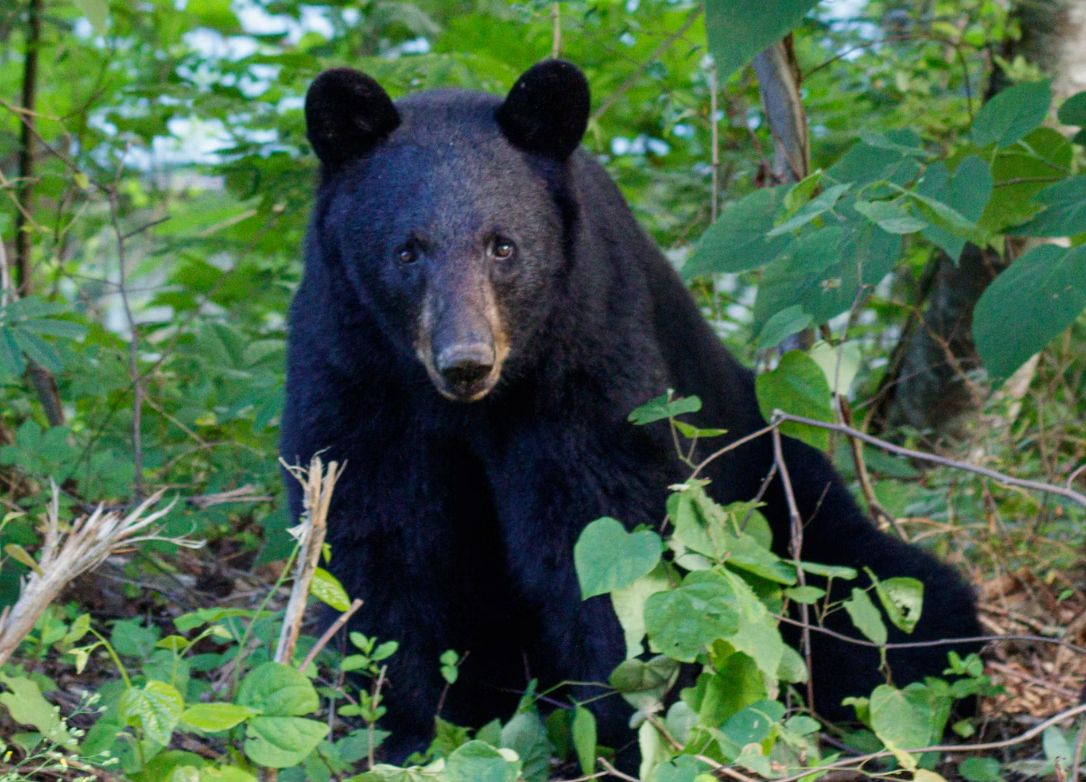More than 11 million visitors experience Great Smoky Mountains National Park each year, making it the most popular national park in the United States.
Whether you’ve been here before or are planning your first trip, here are some Smoky Mountain facts to enhance your appreciation of one of America’s most precious landscapes!
1. The Great Smoky Mountains are the “Salamander Capital of the World”

The Southern Appalachians are a global epicenter of amphibian diversity, especially salamanders (colloquially often called “spring lizards” in this part of the world, though they most certainly aren’t lizards—or reptiles at all). Great Smoky Mountains National Park boasts some 30 species of salamander across five whole taxonomic families, including types found nowhere else in the world: so-called “endemic” species, such as Jordan’s red-cheeked salamander.
The national park hosts an array of both aquatic and terrestrial salamanders, ranging in size from the aptly named pygmy salamander—growing to a mere 1.5 inches or so in length—to the hulking hellbender: at better than a foot long, among the biggest salamanders on Earth!
2. The Smokies Include Some of the Very Highest Peaks in Eastern North America

The Great Smoky Mountains rank among the highest mountain ranges in mainland eastern North America, only out-topped by the Black Mountains of North Carolina, another Southern Appalachian range not far from the Smokies.
The loftiest summit in the Great Smokies, the 6,643-foot Clingmans Dome, is the third-tallest peak in the eastern U.S. (after Mount Mitchell and Mount Craig in the Black Mountains). Mount Guyot (6,621 feet) rises as the fourth-tallest peak, Mount LeConte (6,593 feet) the sixth-tallest, and Mount Chapman (6,417 feet) the ninth-tallest.
One of those bedrock skyscrapers, Mount LeConte, also ranks among the most topographically prominent peaks in the eastern U.S.: The roughly six-mile distance between Gatlinburg, Tennessee, and LeConte’s massif-style summit sees the terrain rise by an impressive 5,300 feet!
3. They Host the Tallest Dam in the Eastern U.S.

Covering more than 10,000 acres, Fontana Lake laps up against the southwestern boundary of Great Smoky Mountains National Park, impounded behind the Fontana Dam. Finished in 1944 by the Tennessee Valley Authority, this 480-foot-tall structure stands as the loftiest dam in the eastern U.S.
It’s also a notable landmark of the Appalachian Trail, which crosses right over it.
4. The Great Smokies Include the High Point of the Appalachian Trail

Speaking of the Appalachian Trail—arguably the most famous long-distance recreational footpath in the world—the Great Smokies host the highest point along its roughly 2,200-mile length hugging the mountain spine of the East. The high point is the aforementioned Clingmans Dome: The “A.T.” hoofs it right over the summit.
And here’s a piece of additional A.T. trivia: Great Smoky Mountains National Park includes some 72 miles of this celebrated trail within its bounds. (And those 72 miles are only part of a Great Smoky Mountains National Park trail system that exceeds 800 miles!)
5. Great Smoky Mountains National Park is the Most Biodiverse Unit of the National Park Service

Salamanders are only one component of the Great Smoky Mountains’ absolutely world-class biodiversity. Close to 20,000 species have been positively identified in Great Smoky Mountains National Park, and scientists believe tens of thousands more here await documentation. There’s no more biologically diverse national park in the country, in fact—and perhaps no more bio-diverse part of Earth’s temperate realm.
The mild, moisture-rich climate (more on that shortly), the sheer ancientness of the mountain range, and its auspicious geographic position make it a refuge for all sorts of plants and animals during past ice ages help explain this dazzling biodiversity.
Dazzling, indeed: The approximately 100 native tree species found within the Great Smokies mean it has greater tree diversity than all of northern Europe!
6. The Smokies Are One of the Greatest Old-Growth Forest Reserves in the U.S.

Those hundred-odd tree species in the Great Smokies compose an impressive quilt of different forest ecosystems, from lush and towering cove hardwood forests to dry oak-pine woods and high-elevation spruce-fir forests.
Perhaps a quarter, maybe even a third, of Great Smoky Mountains National Park’s forests are considered old-growth: i.e., never logged. Such old-growth ecosystems are rare in the temperate deciduous forest realm, making the park’s ancient stands significant not only in eastern North America but from a global perspective as well.
While a lot of Smoky Mountain old-growth lies in the remote backcountry, some fabulous stands are easily accessible, along the Cove Hardwoods Nature Trail and the Albright Grove Loop Trail.
7. This is One of the Wettest Places in the U.S.

One reason the Great Smoky Mountains are so fabulously lush is the high year-round annual precipitation. This massive, high-standing range does a good job wringing rainfall (and winter snowfall, especially at upper elevations) from moisture-bearing airmasses hailing from the Atlantic Ocean and Gulf of Mexico. The higher ridges and peaks receive more than 70 inches of average annual precipitation, and some years they may see better than 100 inches.
That makes the Great Smokies and other nearby ranges of the Southern Appalachians one of the wettest places in the Lower 48 states—and supports not only the luxuriant vegetation that defines these beautiful highlands but also an abundance of eye-catching waterfalls.
8. Great Smoky Mountains National Park Harbors Nearly 2,000 Black Bears

With a population reckoned around 1,900 and a density of about two per square mile, the Great Smoky Mountains are one of the great stomping grounds for American black bears in North America. Unsurprisingly, perhaps, this is also one of the best places to see bears in the country, not least around dawk or dusk amid the open fields of Cades Cove.
9. Natural Atmospheric Particles Cause the Great Smoky Mountains’ Namesake Haze

From Clingmans Dome, Gregory Bald, Charlies Bunion, and other front- and backcountry vantages in the Great Smokies, you can readily see the whitish-blue haze that gives this wonderful mountain range its name. Indeed, the Euro-American label nods to an older indigenous one: The Cherokee people knew these peaks as Shaconage, “the place of the blue smoke.”
Natural aerosols explain the haze: The dense forests of the Great Smokies emit botanical hydrocarbons known as terpenes, which then react with ozone to form larger atmospheric particles on which moisture condenses. Those condensation nuclei—perhaps aided by airborne salt particles sourced from the not-so-very-distant ocean—then scatter the shorter wavelengths of light to lend long sightlines here that dreamy blueish tint.
10. The Establishment of The Great Smoky Mountains National Park Saved Its Forests

The creation of The Great Smoky Mountains National Park played a crucial role in preserving a significant portion of forests in the area. The national park was officially dedicated in 1940 and before that, it was in danger of lumber extraction that was expanding rapidly moving down South. Additionally, over 1,200 landowners had to leave their land once The Great Smoky Mountains National Park became official.
Discover the Magic of the Great Smokies

Heart of the Southern Appalachians, the Great Smoky Mountains are a special place indeed—and a year-round destination for sightseeing, outdoor recreation, and good old-fashioned fresh-air R&R!




